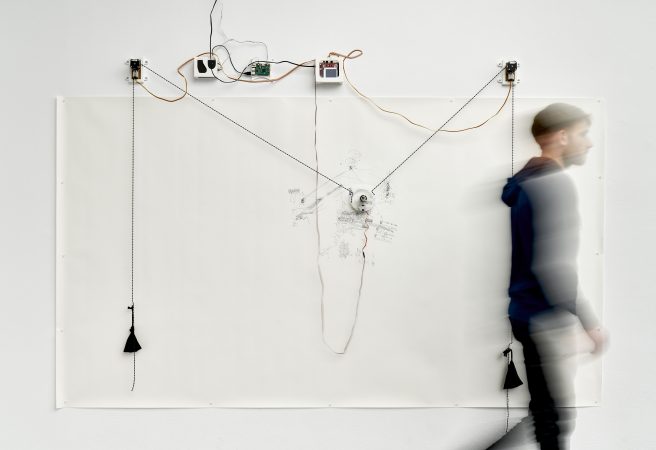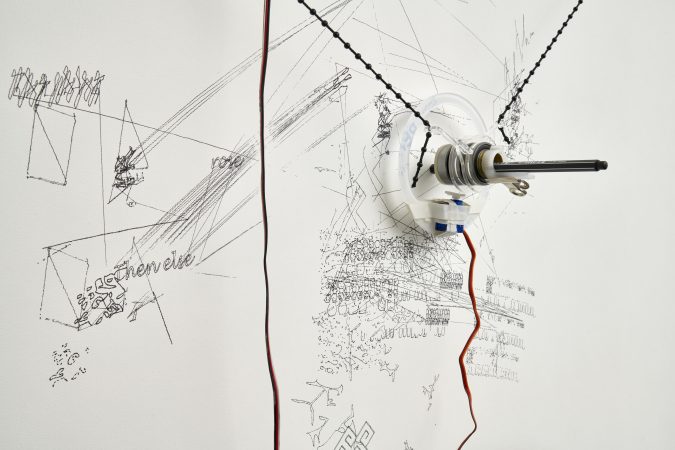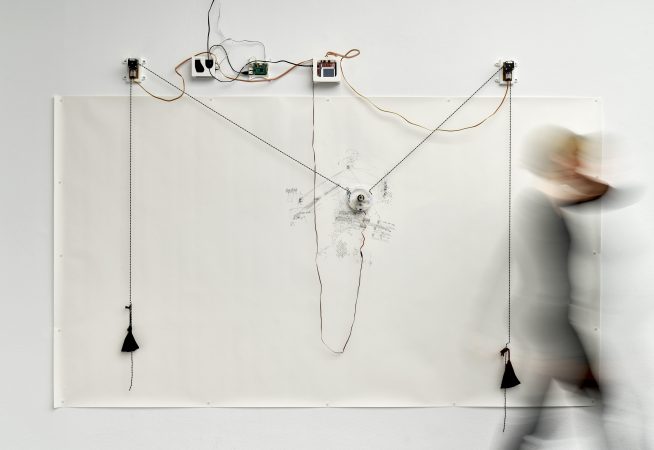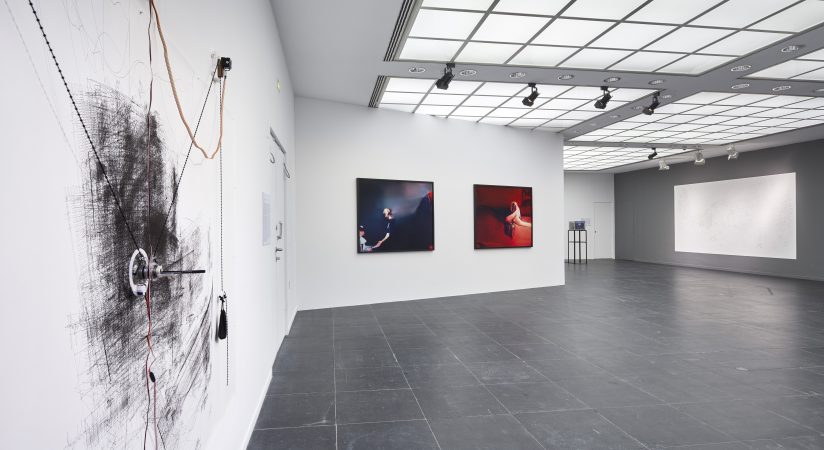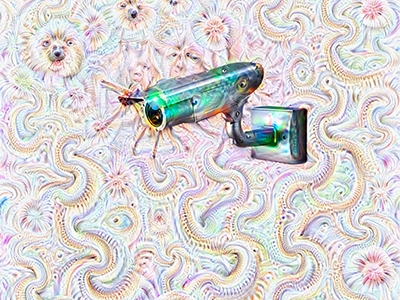Jerry Galle
The Thing That Isn’t, 2016
Electronics, software and drawings
Dimensions variable
Courtesy of the artist
The Thing That Isn’t by Jerry Galle combines a word-processing system with a drawing robot. The work is controlled by two computers, which use electronic components to manoeuvre the drawing arm and broadcast spoken sentences out of the speakers. The automated system executes a programme that determines its drawing. The programme also examines the drawing during the process, comments on it and modifies its subsequent behaviour. Galle fed the learning machines with texts discussing themes such as artificial intelligence or the CIA’s interview techniques as well as essays about art and pedagogy. Algorithms from the field of computer linguistics (NLTK – Natural Language Toolkit) then search for meaning in the texts.
First, the texts are taken apart into smaller units which are classified according to shared traits and arranged under various headings, such as art, language, or psychology, which have been predetermined by Galle. In the second step, the whole text is searched for connections between individual words, for example synonyms, similar dictionary entries, etymological connections, and frequency of word use. In the third step, it generates a decision tree – a tree-like representation of the connections and correlations within the body of text. This decision tree creates vectors, which the movements of the drawing head are then aligned to. At the same time, an independent sentence is generated using words from the original texts and the decision tree. The sentence determines the actions of the drawing arm and is also spoken out over the speakers so that humans can perceive the essence of this automated thought process.
In this never-ending process, The Thing That Isn’t searches for the correlations between words and their possible meanings. This doesn’t lead to a conclusive interpretation, but rather to a network of many interrelated interpretations. Information is extracted and repeatedly altered. Does the loss of information in the translation process come about because the field of terms is constantly expanding or because the software’s abilities are expanding to include complex ‘thought’? General questions arise concerning the abilities and limits of algorithmic perception. Would we trust a machine to have subjective, aesthetic experiences? How meaningful or absurd is it to have machines simulate human behaviour?
The work of Belgian artist Jerry Galle (b. 1969) deals with the relationship between digital technology and contemporary culture. Galle is affiliated to KASK School of Arts University College Ghent (BE) as postdoctoral artistic researcher.

